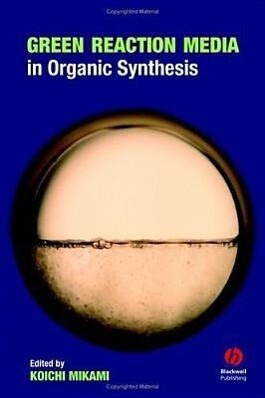Green, sustainable chemistry involves the designing of chemical processes with a view to reducing or even eliminating the use and production of hazardous materials. Recent endeavors have focused on limiting the use of organic solvents and replacing them with new, environmentally benign media. The chemical industry is interested in these cost-effective, alternative solvents and processes.
This book provides a broad overview of the three most commonly used green reaction media. Directed at synthetic organic chemists working in academic and industrial laboratories, it will also serve as a textbook for graduate courses on green chemistry. Successful green reactions are considered, and experimental sections at the ends of the chapters provide important practical details, with illustrations of potential applications. Sufficient information is included to allow selection of the most appropriate medium. Extensively referenced, the volume offers a point of entry into the detailed literature.
Inhaltsverzeichnis
Contributors. Preface.
1. Introduction (Koichi Mikami).
1. 1. Green reaction Media.
1. 2. Ionic liquids.
1. 3. Fluorous media.
1. 4. Supercritical carbon dioxide.
2. Ionic Liquids (Jonathan J. Jordy and Koichi Mikami).
2. 1. Historical background and synthesis.
2. 2 Physical properties.
2. 3. Applications as reaction media.
2. 4. The future of ionic liquids.
2. 5. Experimental part.
3. Fluorous solvents (Ilyhyong Ryu and Hiroshi Matsubara).
3. 1. Historical background.
3. 2. Physical properties.
3. 3. Applications as reaction media.
3. 4. Light Fluorous compounds and fluorous silica gel.
3. 5. Fluorous reactions in supercritical carbon dioxide (ScCO2) and Fluorous triphasic reactions. 3. 6. Experimental part.
4. Supercritical carbon dioxide (Christopher M. Rayner and R. Scott Oakes).
4. 1. Historical background.
4. 2. Physical properties.
4. 3. Applications as reaction media.
4. 4 Synthesis and separation.
4. 5. Experimental methods.
References.
Index.
